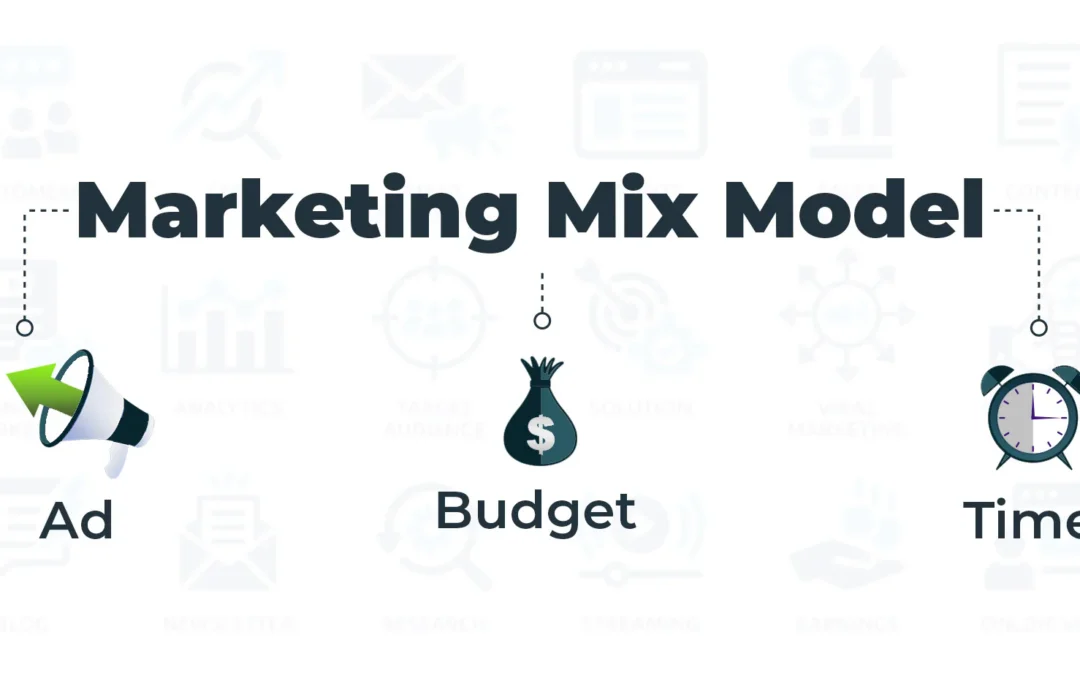What is Marketing Mix Modeling?
Marketing Mix Modeling (MMM) is a way to blend and optimize marketing channels for eCommerce spend across various channels like SEO, Paid, Email/SMS, and Print similar to perfecting a caramel recipe.
Why It Matters?
It is crucial for allocating marketing budgets effectively to maximize ROI against Customer Lifetime Value (CLV).
What To Do About MMM?
Marketers should start by evaluating their current marketing mix, identifying performance gaps, and gathering comprehensive data for leveraging AI to optimize their investments.
Introduction to Marketing Mix Modeling
Understanding where to allocate your marketing budget can be similar to making the perfect batch of caramels. Each channel, like each ingredient, must be measured and tested to ensure the final product is delightful. This is where Marketing Mix Modeling (MMM) comes in, offering a sophisticated methodology with machine learning that helps marketers optimize their spend across different channels, similar to adjusting ingredients in a recipe to enhance the flavor of a caramel.
Quick Historical Perspective on Marketing Mix Modeling (MMM)
In 1949, Neil Borden at Harvard Business School came up with the idea of marketing being a mix of messages delivered through emerging platforms like television, radio and newspapers with the idea that they all played a role in driving a purchase with a consumer (Source: HBR).
Question was, how much does each of these channels deserve credit for that result?

True measurement for these and corresponding real-time data was all but impossible and MMM suffered from skepticism that it was more hocus pocus than actual science. After all, how can you truly measure an ad in a newspaper driving a sale and what would be the lag effect? (We’ll cover all this in much more detail in a future article and also how incrementality testing plays a part).
But an interesting thing happened in the digital marketing revolution. We had data and tons of it suddenly at our fingertips. As marketing evolved into a multi-channel endeavor, MMM adapted to encompass more complex algorithms capable of handling multiple inputs and providing more nuanced insights to understand the relationships between these channels.
Today, MMM combines a company’s historical real-time datasets with advanced Bayesian statistical techniques to predict the future impact of marketing decisions with the computing power of machine learning and AI.
In short, businesses can start to predict and maximize returns on their investments – if they have the data.
But let’s not let that fancy language intimidate us. We’ll unpack MMM through the simple analogy of making caramels.
The Caramel Analogy for MMM
Imagine you are a confectioner tasked with creating the perfect tasting caramel with the least amount of calories. To achieve this, there’s a ton of things we can play with such as the quantities and types of sugar, butter, and cream. We also can play with the temperature at which we bake these caramels and for how long.
In our mission to make the perfect caramel, we’re going to have to continually taste our product (a tough job but someone has to do it). So, we’re continually tasting and tweaking ingredients based on the texture and flavor while ultimately measuring our calories for each batch.

In MMM, each ingredient represents a different media channel:
- Butter (Facebook ads)
- Sugar (Google ads)
- Cream (Instagram ads)
- A dash of salt (email marketing)
Next, we would bake caramels with more butter and less sugar to see how it tastes and the calorie count. We find it’s too fatty and not sweet with more calories.
So we would flip the ratios and bake another batch at the same temperature for the same amount of time while noting the humidity in the kitchen. Each one of these tweaks become variables in our recipe mix that can be tested over and over. Some of them will have a huge impact on taste and calories (butter) and some likely not (humidity).
But this obviously takes a lot of time and wasted ingredients.
What if we could take a few of our early batches, compare our taste tests and calories output and encode them as data, and then run some simulations on a computer to predict the perfect batch over and over with multiple tweaks?
In this scenario, we would look to an algorithm to figure out if we need more salt (email) and a bit less butter (Facebook ads) and baked for a tad longer to get the perfect tasting caramel with the least amount of calories.
In essence, this is what MMM is doing behind the scenes.
Just as you would adjust these ingredients to perfect your caramel, MMM allows you to change your marketing spends based on performance feedback in near real-time, aiming to craft the most effective marketing mix day in and day out based on changing market conditions.
Why It Matters Now
With the rise of digital marketing and granular datasets, the complexity and number of available channels have exploded, increasing the difficulty of manually optimizing marketing spends.
Not unlike our caramels where we have ratios of the ingredients, humidity in the kitchen, temperature in the oven and the time to bake to test.
It’s too many variables for a human to process and even if possible it would take way too long in Excel to drive meaningful results given the speed at which modern commerce moves these days.
MMM automates this process, providing a data-driven way to allocate budgets efficiently. It’s not just about spending less; it’s about spending right to get the best customers as measured by their customer lifetime value as quickly as possible. By understanding which channels (recipes) yield the highest ROI, businesses can achieve better results without necessarily increasing their overall budget.
And this is what every CFO and CEO ultimately cares about not the fancy AI or math.
Integrating MMM in Your Ecommerce Marketing Strategy: Data Warehousing
To effectively integrate MMM into your ecommerce marketing strategy, start by gathering comprehensive data from all your marketing channels which is commonly called a data warehouse. (Our software, the Tadpull Data Pond™, does this automatically but you can also build your own data warehouses as well).
The fuel for AI truly is clean and organized data and often where teams fall down given this can be laborious and boring.
Data warehouses are akin to having your butter, cream, sugar and salt all laid out on the table before you start mixing up your caramels. Admittedly, assembling these ingredients is not glamorous and can be very tedious and time consuming much like going to a grocery store on a busy Saturday morning.
Here is an example of what a data warehouse might look like just for paid media spends:

Note: Screenshot of Tadpull Data Pond for advertising spends which tracks all ecommerce campaign data on a second by second basis and predicts results using AI.
Here we have the ingredients all put together and organized in the following manner:
- Day of the week (we could be measuring by the hour but for our models this is good enough)
- Sessions – how many people came to the site.
- Revenue – total money made on that day.
- Total Ad Spend – all our ad buys on that day (in essence the grocery bill for buying all our ingredients per day).
- Facebook/Google/Bing/TikTok Spend and Impressions, etc – each ad platform on cost and impressions natively reported and pulled in via an API to our data warehouse.
Next, you want to use statistical tools to analyze all this data which goes multiple years. We’re chasing down what trends and relationships emerge. Does more Bing make the caramels taste better with less calories? As we get each fictitious batch of caramels baked, we test, tweak, and then throw another batch in to see the results and update our recipe at every step.
Here is where we can use machine learning to test different spending scenarios to predict which ingredient can have the most ideal impact. We don’t want to add extra calories with too much butter (Facebook ads) if the taste isn’t any better (campaign returns). Instead, we want just the right amount.

Note: Here we see Facebook spend topping out at about $5K per day for driving revenue but the company has spent up to $17,500 per day with no real meaningful lift. This is like adding 3X the butter and having the caramel taste the same but with triple the calories. Too rich.
By treating your marketing budget as a recipe for delectable caramels, where each dollar is an ingredient to be optimized for the perfect balance, you can enhance both the efficiency and effectiveness of your marketing efforts.
Three Key Takeaways for Understanding Marketing Mix Models (MMM):
- Holistic View on Marketing Spend: MMM helps allocate marketing budgets more effectively by blending different channels like SEO, Paid, Email/SMS, and Print, ensuring each contributes optimally to the overall marketing strategy not unlike baking the perfect caramel with the least amount of calories.
- Data-Driven Decision Making: By collecting and cleaning comprehensive datasets and employing machine learning methods, MMM allows marketers to identify performance gaps and optimize spends based on solid evidence rather than intuition.
- Integration of Advanced Tools: Utilizing tools such as data warehouses and statistical models enables marketers to not only gather and organize large datasets but also to analyze and predict the best marketing mix to improve customer lifetime value.
Up Next: Learn how to apply Marketing Mix Modeling in a step by step way and download our checklist

